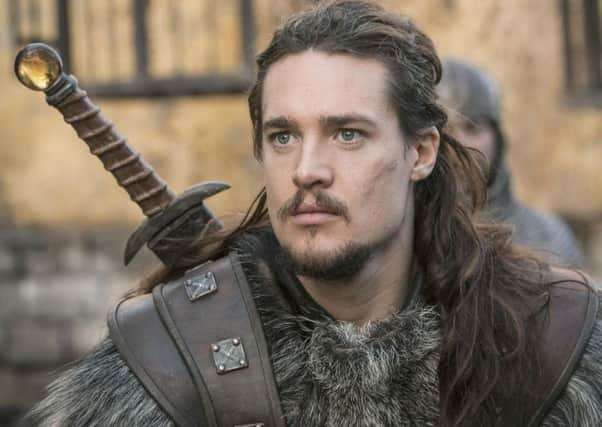Why the origins of Yorkshire’s DNA show The Last Kingdom is more fact than fiction.


With much of the early blood and guts action set in the dank mists of Dark Ages Yorkshire, the new BBC blockbuster series, The Last Kingdom, has already grabbed a Game of Thrones audience.
The only problem is sorting out the goodies from the baddies. Hair is a help. Complete with hipster-length beards, pigtails and faintly foreign accents, ‘the Danes’ confronted the army of three worryingly clean-shaven and clearly doomed English kings. If you want to last in 9th century Yorkshire, grow a beard.
Advertisement
Hide AdAdvertisement
Hide AdSo far, so much historical hokum. And yet, the savagery and the costumes, the settings and the action all reek of an unmistakable sense of authenticity. Which should not be a surprise. The Last Kingdom is based on a series of novels by the great Bernard Cornwell whose narrative skill is often driven by historical fact than fantasy. But more, it turns out that this savage and colourful hunk of Yorkshire’s history is further illuminated by science.
When Yorkshire’s DNA was launched there years ago in partnership with The Yorkshire Post, we hoped to be able to write a people’s history. The idea was to encourage people to register for a test which would detail exactly where their answers originated. We knew the results would be interesting, but even we were amazed when our findings appeared to shed light on the blood-soaked politics that swirled around the making of the kingdom of England.
The hairy barbarians known as Danes have not gone away. Perhaps this should surprise no-one, but the modern male population shows a very strong signal of these invader lineages. More than half a million men who walks the streets of Leeds, Sheffield, Bradford, Hull and York are the direct fatherline descendants of Danes, Vikings and the earlier arrivals, the Angles and Saxons. But within Yorkshire itself, we have come across fascinating differences, ancient faultlines and fissures that still show up in ancestral DNA.
In West Yorkshire, we have found the classic Celtic Y chromosome in about 19 per cent of all men. This compares to 13.5 per cent across the rest of Yorkshire. Our hypothesis is that this is a memory of the ancient British kingdom of Elmet. Its rulers reigned until the early decades of the 7th century until their lands were overrun by Germanic and Scandinavian incomers.
Advertisement
Hide AdAdvertisement
Hide AdIn the opening episode of The Last Kingdom, a caption announces that the hall of Ragnar, a full-bearded and pigtailed Dane, is in Loidis, a name that morphs into Leeds. And at that moment, Bernard Cornwell’s story begins to morph into ancestral genetics.
In 9th and 10th century England Scandinavians were often called Danes no matter where they actually came from. And Yorkshire’s DNA has discovered a slightly different story. More than seven per cent of all men in West Yorkshire carry the chromosone which comes from Norway where 30% of all men have it.
So how did so many Norwegian Vikings end up in West Yorkshire? In 877, Halfdan, warlord of the army of the Dublin Vikings, ordered the execution of King Constantine I of Scotland. Once Halfdan’s fleet had been floated in the Forth, it sailed down to the mouth of the Humber and then turned inland. In 875. Halfdan founded the kingdom of Jorvik, based on York, and after that date the land was divided into Threthingr, or Thriddings, Ridings.
The results we have so far are helping to write an important chapter in Yorkshire’s history and build up a detailed picture of who are ancestors really were.
To take part in the Yorkshire’s DNA project or to order a test as a gift call 0345 450 248 or visit www.yorkshiresdna.com and claim a £60 discount.